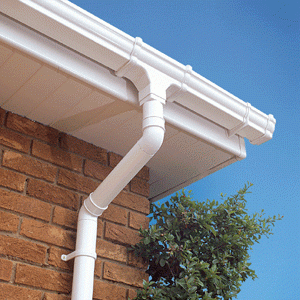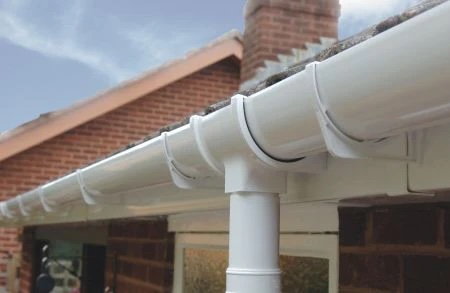Five Killer Quora Answers To Replacing Guttering And Downpipes
페이지 정보

본문
 The Importance of replacing guttering and downpipes, squareblogs.net,
The Importance of replacing guttering and downpipes, squareblogs.net, The right guttering will divert rainwater away to avoid flooding soil erosion and foundation damage. Regular maintenance ensures that they are free of clogs and working effectively.
The right guttering will divert rainwater away to avoid flooding soil erosion and foundation damage. Regular maintenance ensures that they are free of clogs and working effectively.The size of your downpipes should be in line with the roof size is essential for proper drainage of water. This will eliminate bottlenecks and ensure optimal performance.
Placement
Gutters are designed to collect and drain rainwater. However, if they're damaged or not properly placed they can allow water to run down the sides of the house and then seep into the foundations and walls. This can cause structural damage and flooding, soil erosion and damp crawlspaces and even deterioration of the roof. To avoid this, it is important to install guttering and downpipes properly. This is often regulated in building regulations.
Downpipes are drainage pipes that connect to a spouting or guttering and funnel rainwater (and melting snow in cold climates) away from the house through efficient gravity flow. They safeguard foundations and walls against water damage and prevent rotting fascia board and leaks.
The correct size of a downpipe is crucial for a gutter system. Oversized downpipes may cause overflow and, if placed too near the home, can increase the risk of flooding. The size of the downpipe is contingent on the roof pitch and the size. A good rule of thumb is one downpipe for 9m (30ft).
There are a variety of downpipe materials, including plastic and vinyl. Metal choices like galvanised steel or aluminium provide strength, corrosion resistance and long-lasting endurance in all weather conditions. Plastic alternatives like PVC and vinyl are lightweight affordable, cost-effective, and simple to install, but they can be vulnerable to UV deterioration in harsh sunlight.
After the downpipes and gutters are installed The next step is to seal them together with high-quality siliconized caulking. This will ensure that the joint is water-proof and the bolts and screws are properly sealed to stop water from getting into the joints. Caulking should be applied to all seams, endcaps, and downpipe outlets to prevent leaks.
Materials
Gutters and downpipes need to be in good condition for water to flow effectively. To avoid flooding, blockages and foundation damage, as well as expensive repairs, it's important to keep them clean and maintain them regularly.
Before beginning, make sure you have the correct items for your gutter replacement project. This includes the gutters and downpipes replacement, hangers, downpipes, connectors, sealant, and screws. It's also important to plan the installation properly and to always work safely. This includes setting up a sturdy ladder and taking appropriate precautions, such as wearing personal protective equipment.
Mark the location of the downpipe on the wall with a pencil when you are installing new guttering. You can then determine the length of the guttering to determine the length you will need to cut.
When cutting the guttering, leave a bit of extra length to allow expansion lines and click-fit fittings. After you've cut the guttering, use a steel file to smooth any burrs. Remember to lubricate the click-fit connections with silicone spray lubricant before fitting them.
Gutter hangers are designed to support the weight of your gutters, so it's essential to replace them when they're corroded or damaged. They are usually fixed to the fascia board using sheet metal screws or pop rivets. You must also replace the gutter brackets and tie-ups.
Downpipes are utilized to drain rainwater away from your property. They reduce the risk of flooding in basements and soil erosion. They also help stop water from entering crawl spaces and wood decay. A properly functioning downpipe drainage can also help to protect the roof by reducing the stress on the structure and preventing overflow.
You can do some maintenance and repairs to your downpipe yourself. However, a professional is needed to handle more serious issues such as blocked pipes or damaged pipes that aren't cleared up with flushing or leaks resulting from broken areas or gaps. Qualified gutter contractors possess the tools, equipment and know-how to assess and repair any downpipe issues. They will also be capable of replacing guttering and downpipes in the correct sizes and types to ensure the best efficiency.
Installation
Downpipes ensure that the water coming off your roof is properly drained. Without them, your guttering might overflow or result in excess moisture, leading to various issues for your home, including damage to landscaping flooding in basements and crawl spaces, structural damage to your home, and mould growth.
When selecting your downpipes, it is best to choose high-quality materials that can drain away the rainwater efficiently. You should also select the proper size downpipes based on how much rainwater you intend to divert and the size of your roof's surface. There are a range of styles and sizes to fit any house including round downpipes that provide a classic look to square ones that can be used for both modern and traditional homes.
After you have decided on your downpipes, you will have to mount them on the wall. This is a job that can be completed either by yourself or by hiring a professional gutter installation company. If you decide to take on the task yourself, start by marking out the position of each downpipe with a vertical chalk line. This will help to keep them straight and make sure they are placed where they are required to be. After that, attach the brackets to downpipes. They should be set on each end of the downpipe to stop them from moving over time, especially in the case of eaves that are low.
If you have a substantial amount of rainwater that needs to be diverted, it is an ideal idea to add downpipe extension to your gutters. This will ensure that the water flows to the right place. If your gutters or downpipes aren't properly positioned they can result in standing water that can lead to erosion of your yard and cracks in your foundations.
Once the downpipes are in place, it's important to check for any gaps or leaks. Caulk should be applied to these areas to prevent water from getting into your home. Caulk should be applied to the joints and end caps of downpipes in order to make them waterproof.
Maintenance
Drainpipes and gutters are crucial for a home. They control the flow of water and redirect it away important areas such as doorways as well as porches, garden beds and even the entrance to. They also protect the roof and foundations from water damage. However, over time, downpipes and gutters are prone to becoming blocked by debris, making them less efficient for their purpose. A guttering system that is regularly maintained and cleaned can help prevent this.
Gutter maintenance is an important and simple home improvement that should be done every year to ensure that the guttering is functioning properly. This involves inspecting and repairing downpipes in order to ensure that they're not blocked, checking the gutters and their brackets for cracks or leaks and also making sure that all brackets are aligned correctly. To avoid problems in the future it is essential to follow the correct procedure of re-aligning the guttering when sections have shifted.
The downpipes are an essential part of the guttering system, helping to disperse rainwater from the roof. They are placed in the gutter, they should be at least one metre away from the house. This will help to keep water away from important areas. It is Best gutter repair near me to keep the distance between downpipes and the house as large as you can. This will reduce the chances of leaks.
Over time, downpipes may become blocked by moss and wet leaves. Regular cleaning and the use of a gutter drain unblocker can help keep your drains clear. You can also purchase downpipe plugs which fit into your downpipes and aid in preventing blockages.
It is also an excellent idea to think about the possibility of adding a drop outlet downpipe to your gutter system. This will allow you to direct water into a new gulley or soakaway. Attach a plumb line to the fascia and position it directly above the drain to determine the correct location of the outlet.
You can patch any holes that you find in your guttering using roofing cement. The roofing cement should be sprayed to the inside of the gutter downpipe repair and then smoothed. You can also apply gutter sealants. They are ideal for iron guttering because they come with an anti-rust coating to shield the material from moisture and other harmful elements.
- 이전글5 Killer Quora Answers To Replacing Guttering And Downpipes 24.11.21
- 다음글5 Killer Quora Answers On Replacing Guttering And Downpipes 24.11.21
댓글목록
등록된 댓글이 없습니다.